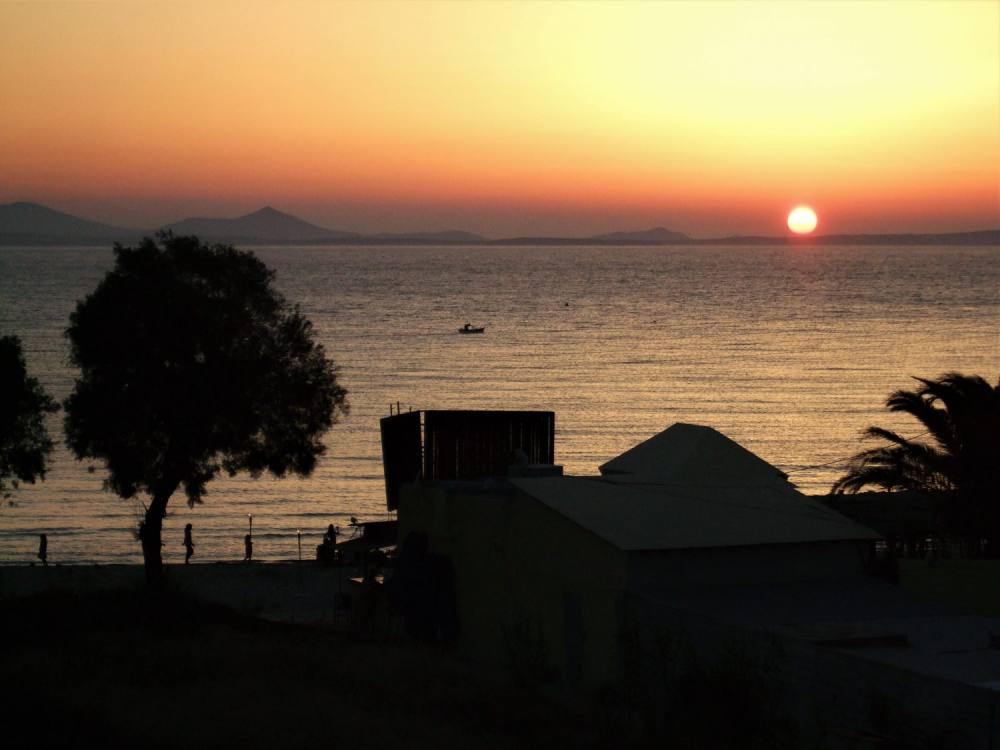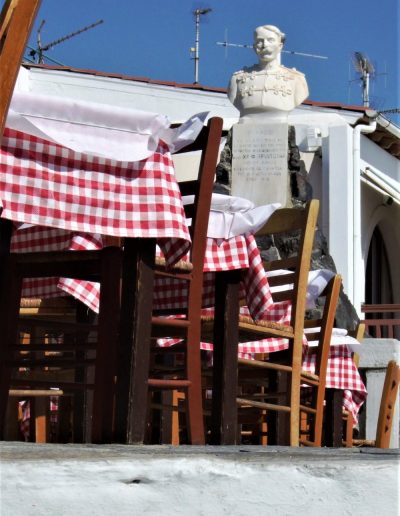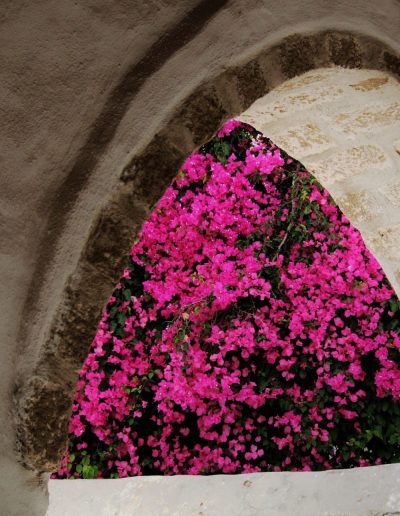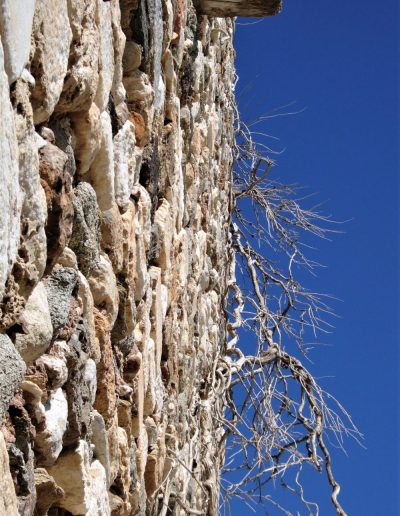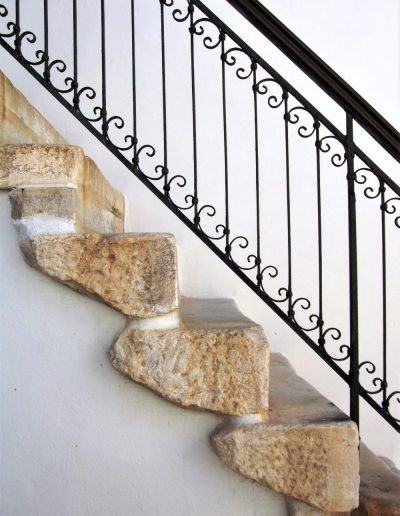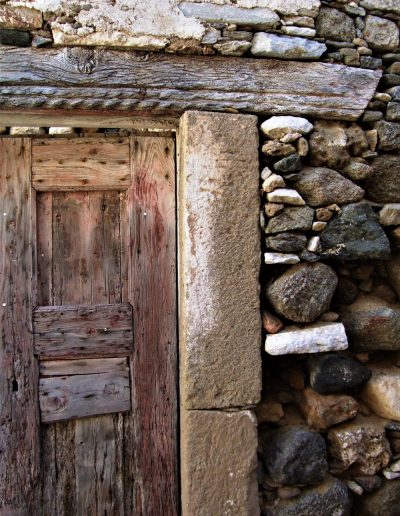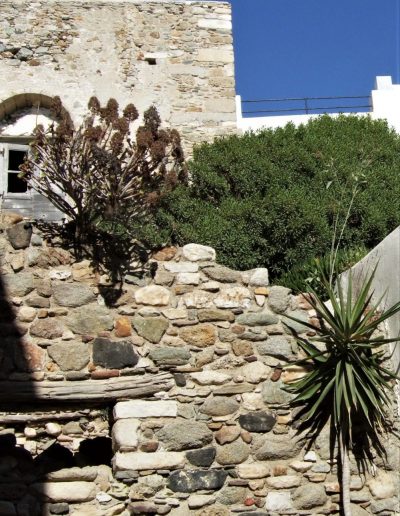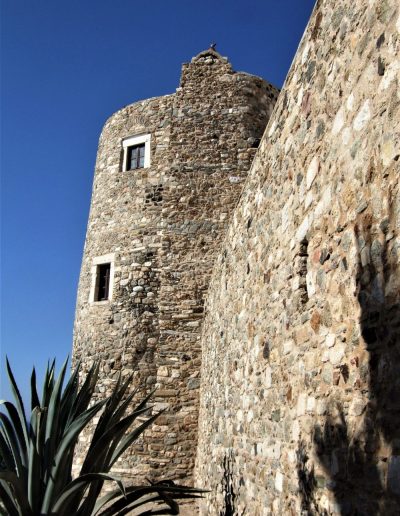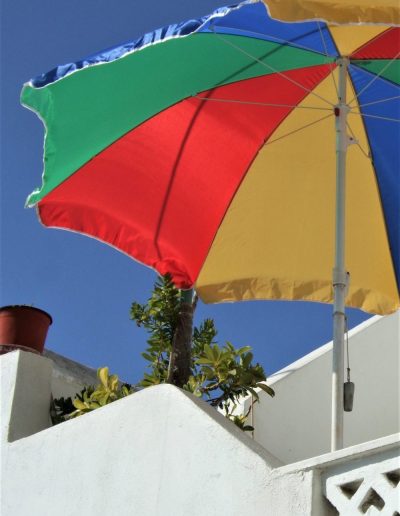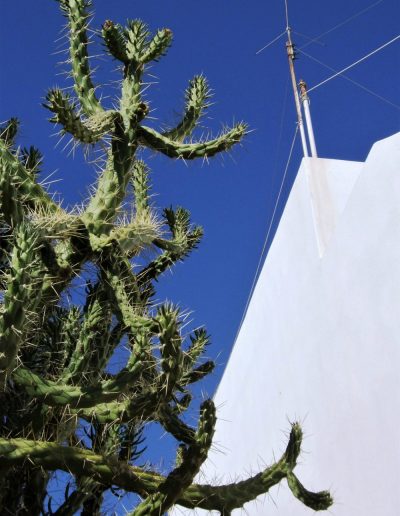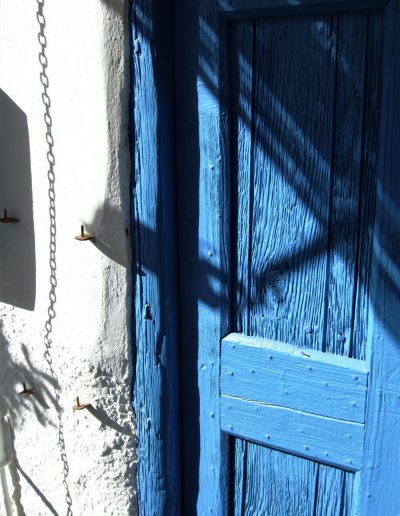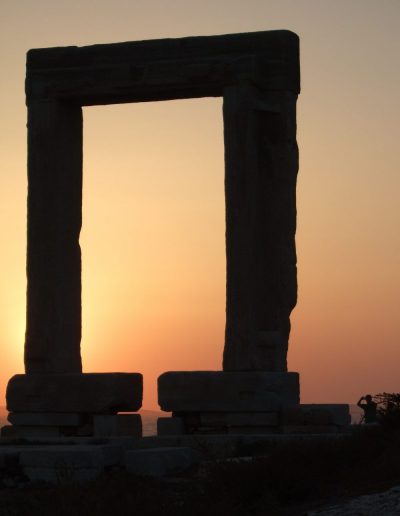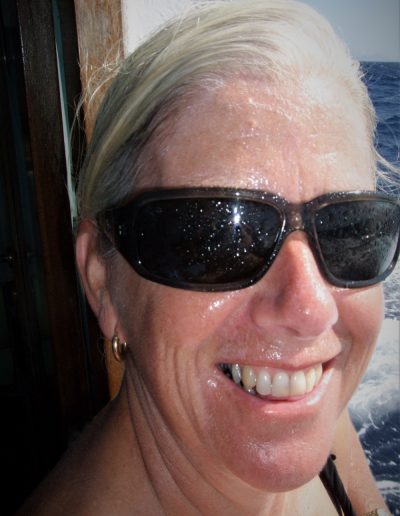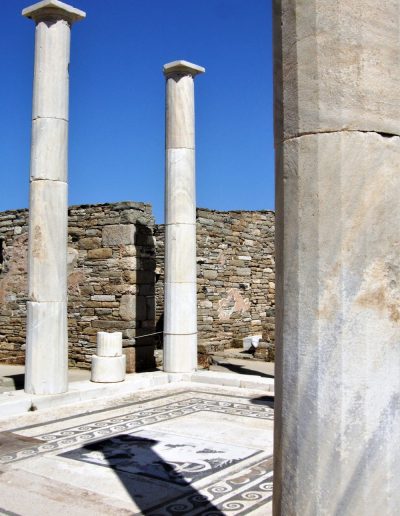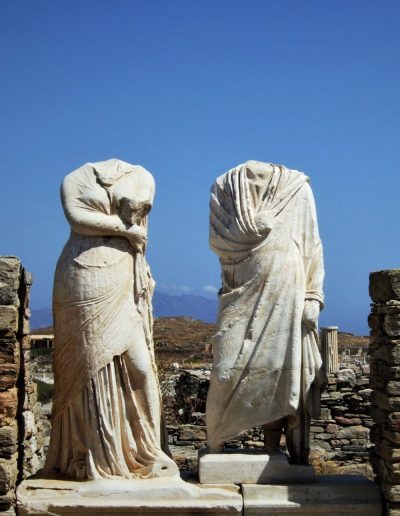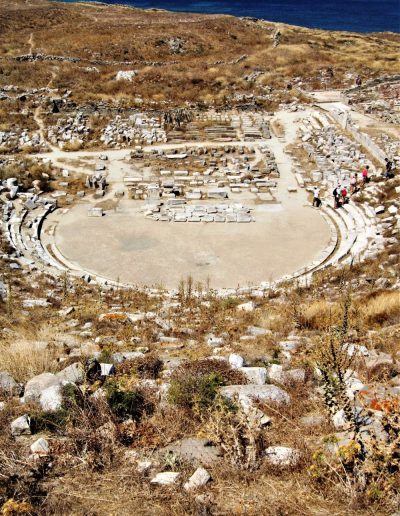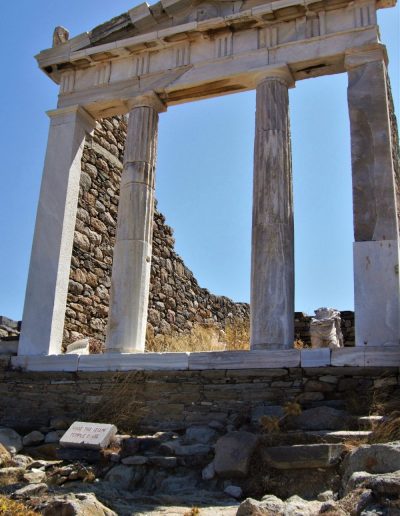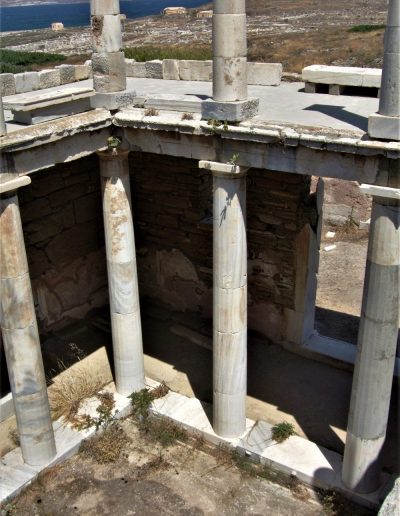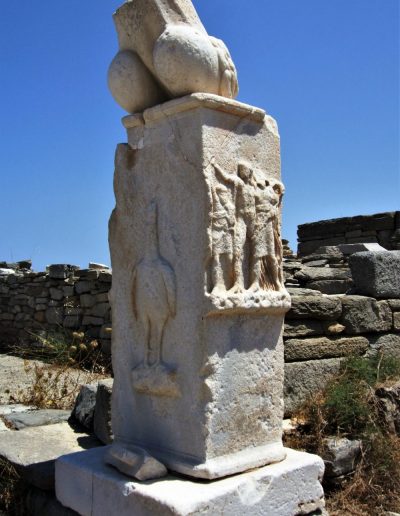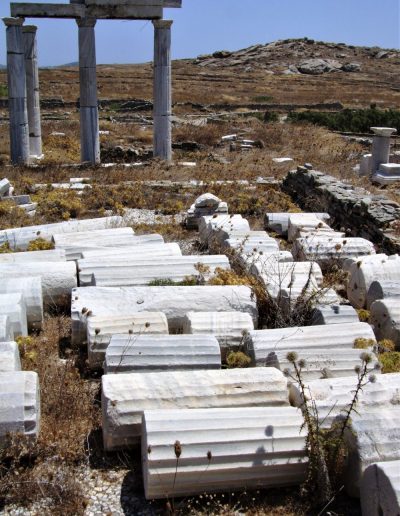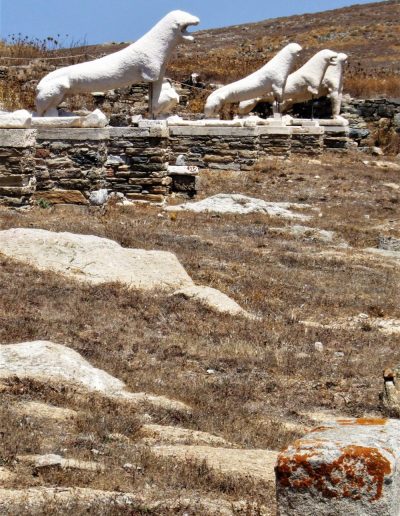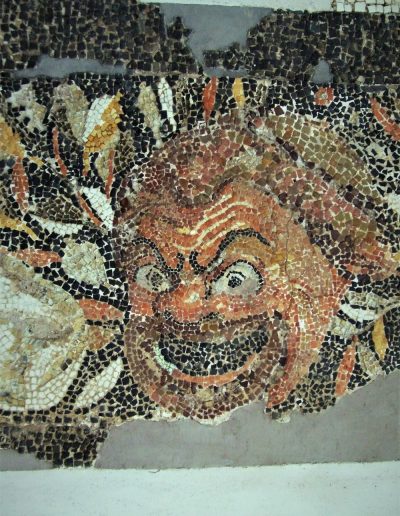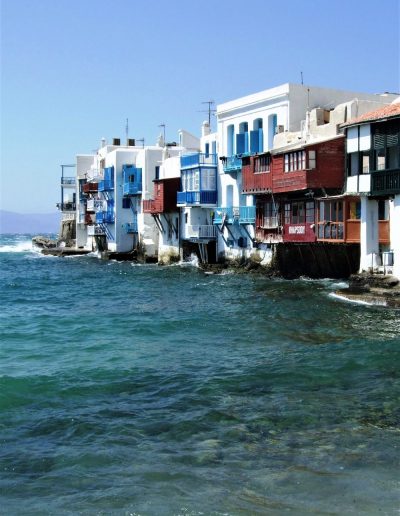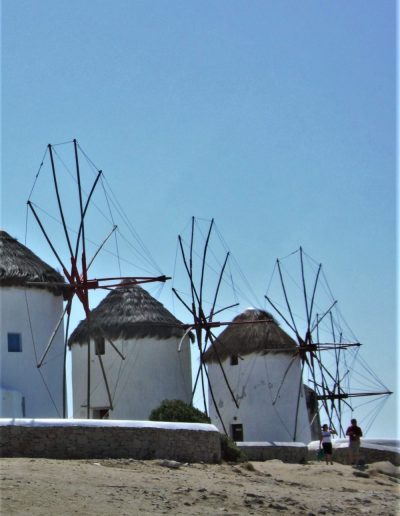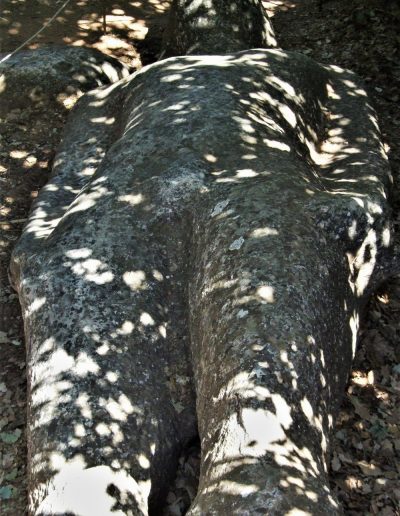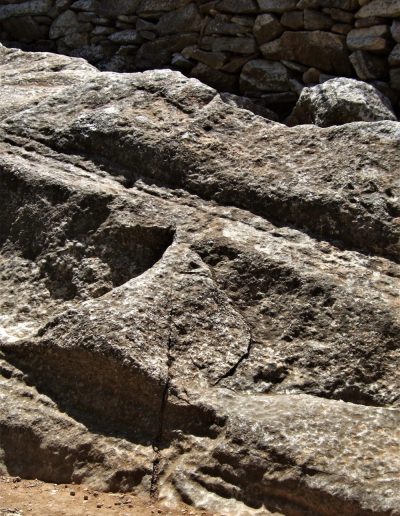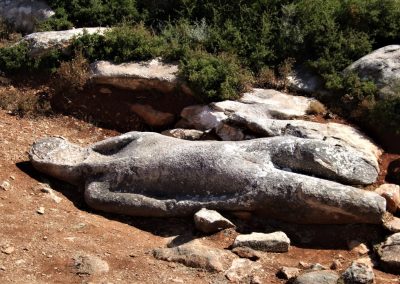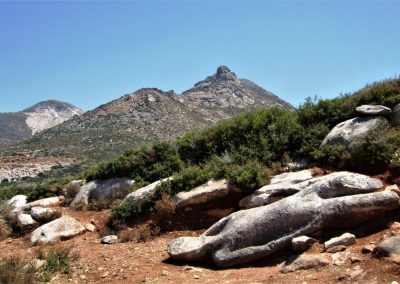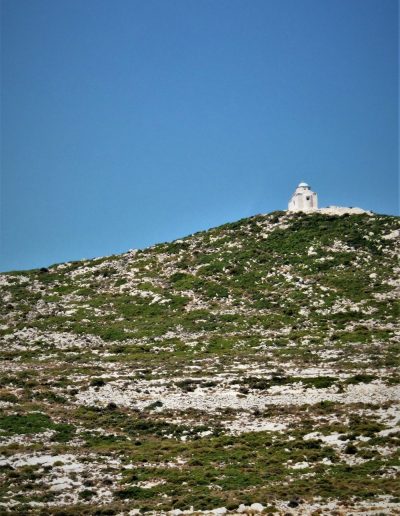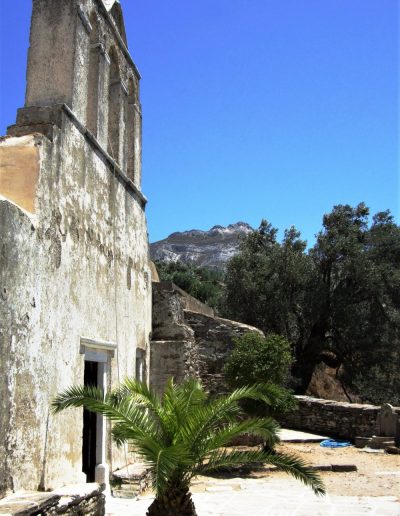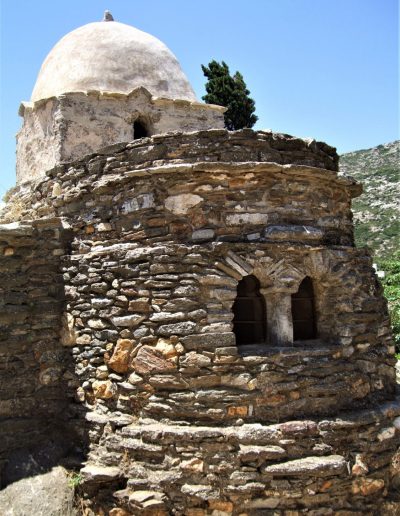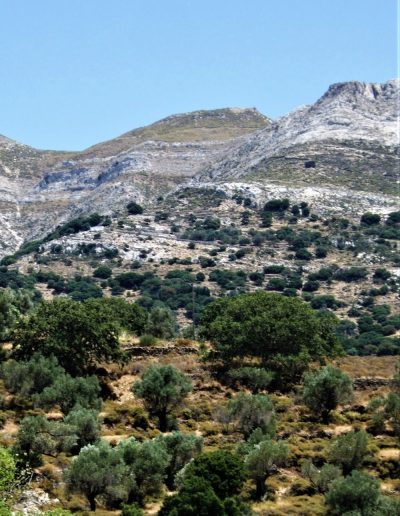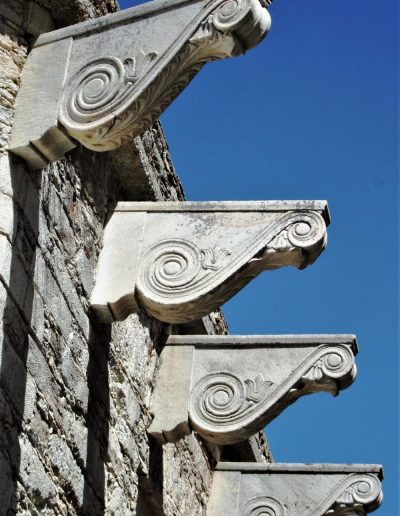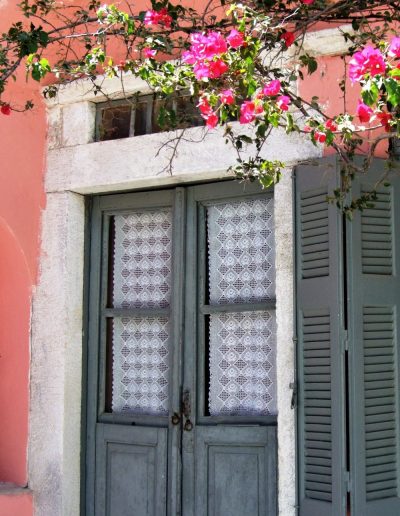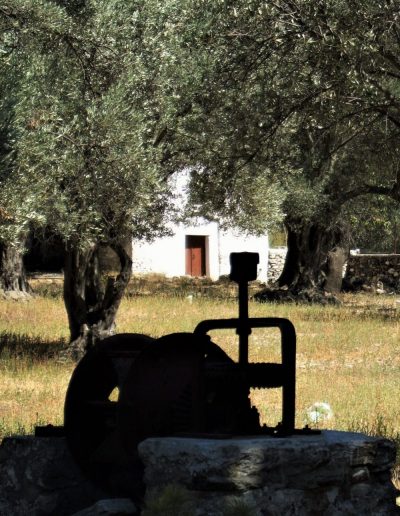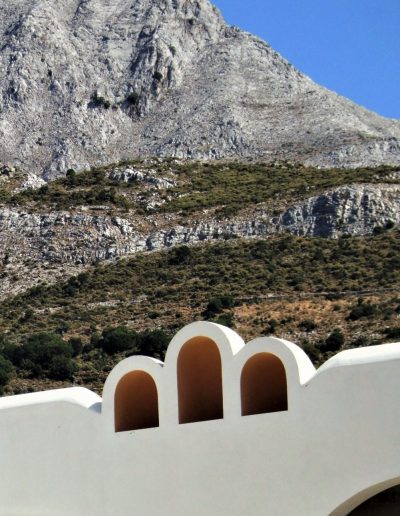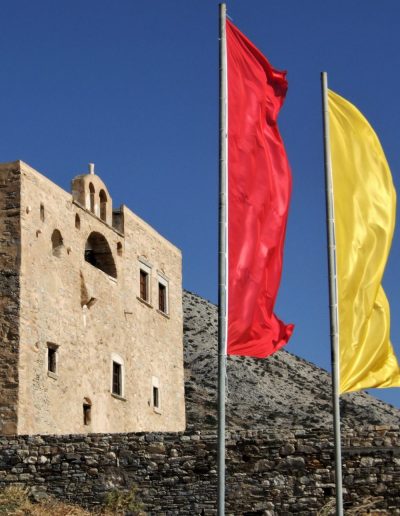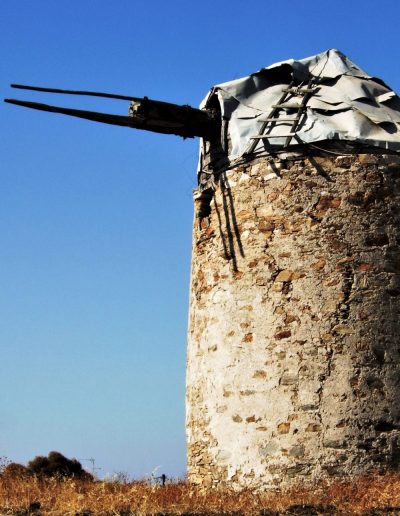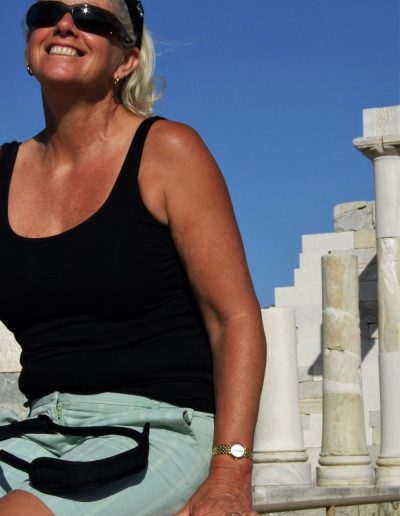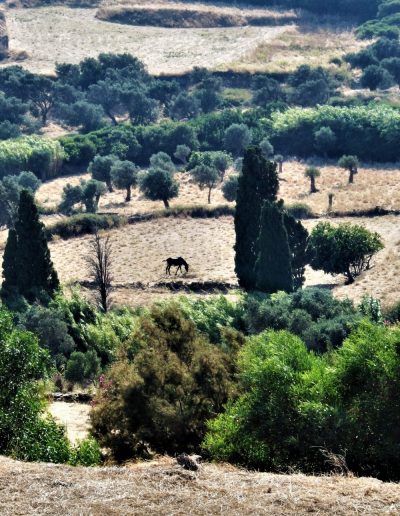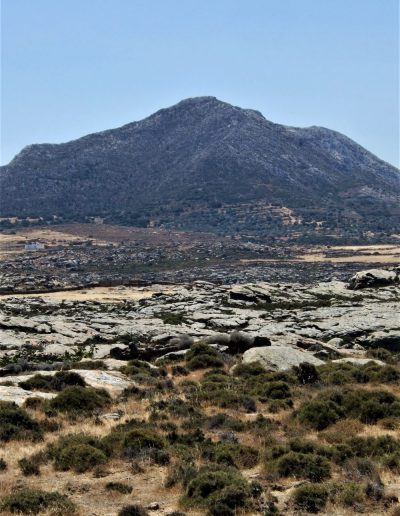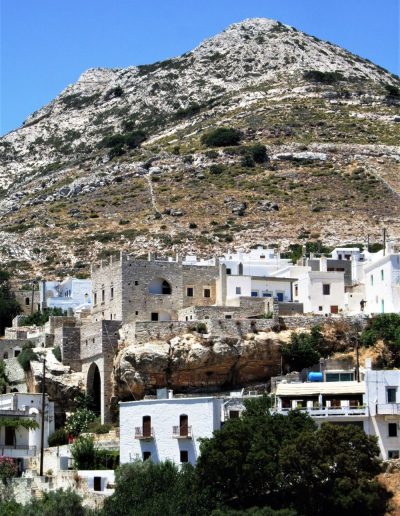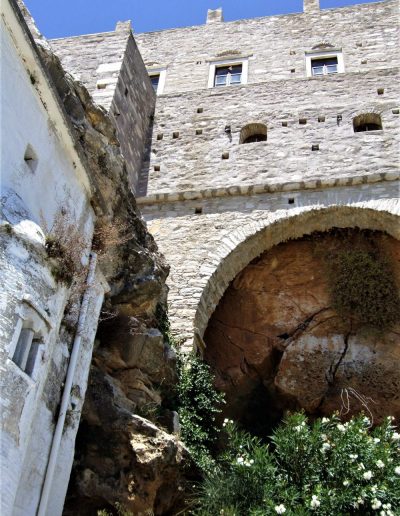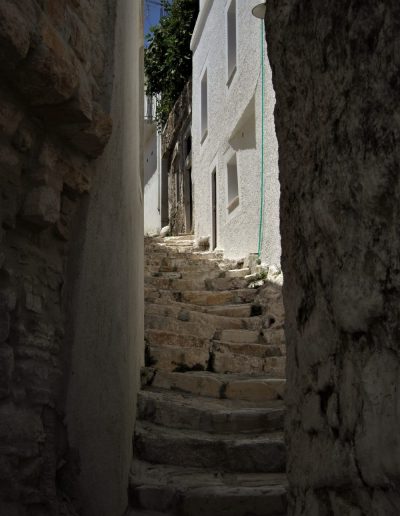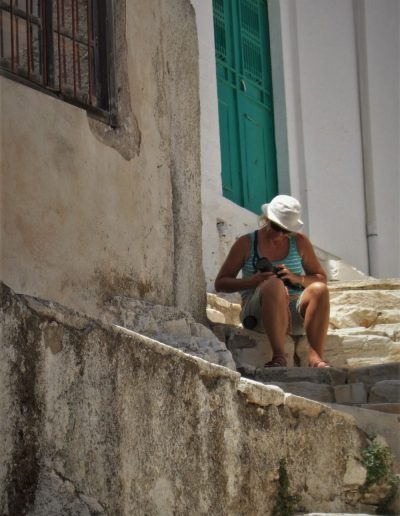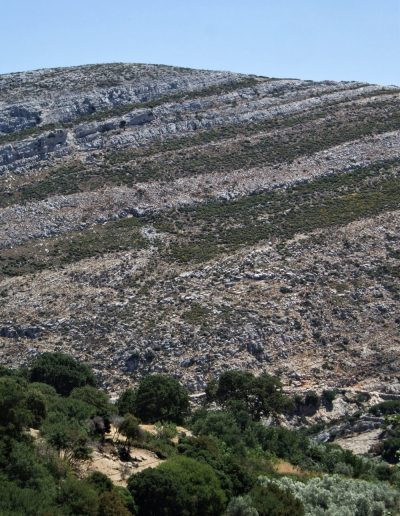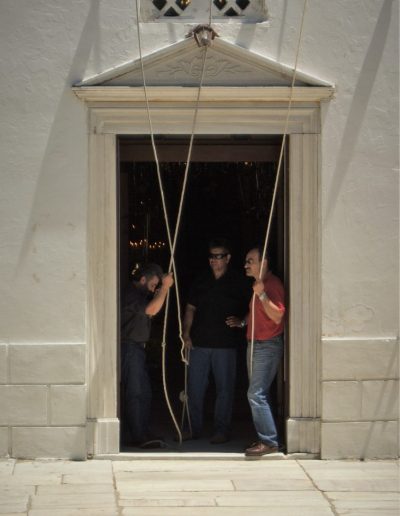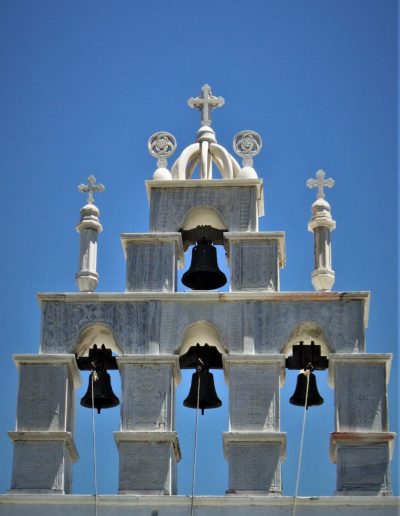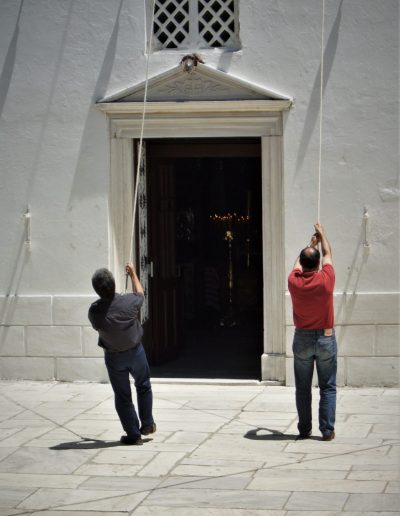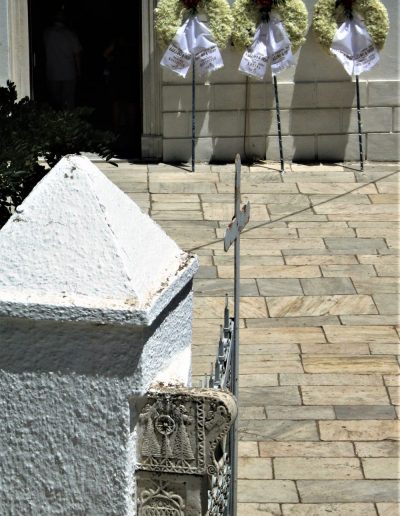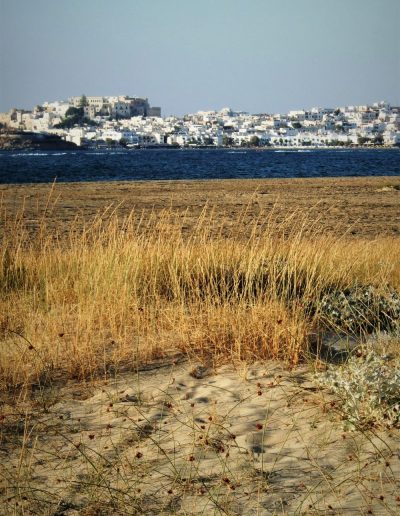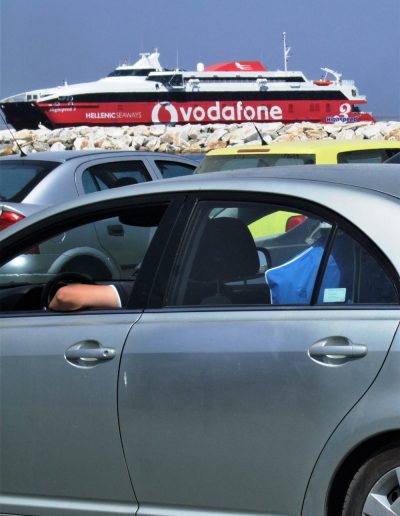- Caught the ferry from Folegandros to Naxos, via Sikinos and Ios.
- We had about a week on Naxos, staying in Naxos Town which is also called Hora. Our villa was just a little south of the town centre, on Agios Georgios beach.
- This was basically the last destination in our three month trip and we’d chosen it carefully, wanting a place where we could relax but not get restless. The island did not disappoint.
- We spent a few days chilling out and moving no further than villa to beach to taverna and back again.
- Then took a boat trip to the island of Ancient Delos with a stop at Mykonos. After that we hired a car for a couple of days to explore the Tragaea region in the centre of the island which turned out to be very interesting and enjoyable.
- In the end we were sad to leave the beautiful island of Naxos.
- Hora is a lovely town in itself.
- In 1207, after the Fourth Crusade, a Venetian Duke named Marco Sanudo seized the island of Naxos and lay the foundations for creating his Duchy of the Archipelago, which basically included all of the Cyclades. He built a new capital called Kastro on Naxos. Remnants of the old Kastro remain to this day and it’s a lovely place to wander.
- The other main attraction in Hora is the Temple of Apollo , known as ‘The Potara’ (doorway), which dates from 530 BC. It sits on the islet of Palatia and is accessed via a causeway. It’s a popular spot at sundown.
- One day we took a boat trip to Ancient Delos with a stop in Mykonos on the way home.
- According to Greek mythology, Apollo was born on the tiny island of Delos in the middle of the Cyclades archipelago. It is considered to be ‘the most sacred of all islands’ and is a World Heritage site. There’s been a sanctuary here since the Mycenaen period (1,400 BC) and Homer’s Odyssey places it as a religous centre of the Ionians around 700 BC. There is no permanent population on the island so you must come and go within the day. Disembarking onto a tiny, barren island with a high concentration of buildings reflecting this long history is a remarkable experience. We spent several hours walking the whole site and visiting the excellent museum.
- The boat trip stopped at Mykonos on the way back. We’re not attracted to the ‘party islands’ of Greece, though it was pleasant enough to walk around the waterfront and wander the backstreets and lanes for a while. It was a windy day and we could see why windmills had been a popular source of energy in the old days. Perhaps they’ll make a comeback..
- Naxos is quite a big island by Greek standards, the largest in the Cyclades. On the last couple of days we hired a car to explore the central region of Tragaea where there are heaps of interesting things to see. It was fantastic.
- We’d seen a number of Kouros statues in museums in Greece, but had never really thought about how they were made. Naxos provides a fascinating insight into this process.
- In Flerio, near the modern town of Mili, you can see two partly sculpted Kouroi from 7-600 BC that were abandoned in situ because they were broken or did not pass quality control.
- You come to understand that these huge statues, which are about 5.5 metres in length, were mostly carved in the quarries then transported to their destinations for finishing. Ancient grooves in the rocks indicate how they were moved.
- It’s remarkable to think that in the Archaic period of Greek history there was such a surplus of productivity within society that very significant resources could be dedicated to the purely aesthetic activity of statue making.
- It was also quite poignant to see a modern marble quarry still operating nearby.
- Our next stop was Panagia Drosiani, which is one of the oldest churches in the Balkans. It has multiple chapels dating back to the 6th C, the 8th C and the 13th C. In one version of events, the name comes from an icon of the Virgin that perspires when in danger and cools to perform miracles. The other version, much more mundane, is that the church is built on a location called Drossia. Either way, this ancient building has a substance that we found very affecting.
- From here we headed to the gorgeous village of Chalki. It was clearly a prosperous place in its day, and the look of faded glory is very alluring. We had a great lunch in the central square then wandered out to the Church of Georgios Diasorites to walk it off.
- The inland region of Tragaea is a plain covered in olive groves, surrounded by peaks, and dotted with villages and churches. Mt Zeus (or Mt Zas) is the highest point on Naxos at just over 1,000 m, and the village of Filoti sprawls at its feet.
- The 17th C fortified monastery of Timios Stavros is now called the Bazeos Tower, renamed by the family that has refurbished it and turned it into a centre for cultural events including the annual Naxos Festival.
- Ruined windmills dot the skyline around Ano Sangri.
- Our last stop was the the Temple of Demeter, dating from 600BC.
- What a day…
- On our last day we drove to the mountain village of Apiranthos which is populated by the descendents of refugees from Crete, and has a strongly independent feel to it. It’s a rugged place, seemingly built entirely of marble carved out of and reattached to the slopes of Mt Fanari.
- There was a funeral being held in the village on the day we visited and it was interesting to watch the rituals unfold from a respectful distance.
- Drove back to Hora in the glow of early evening, dropped off the hire car and enjoyed our last island taverna dinner of this trip.
- Caught the ferry to Athens next morning. We rode on the Hellenic Seaways ‘Highspeed 3’, built by Austal shipbuilders in Perth, Western Australia.

